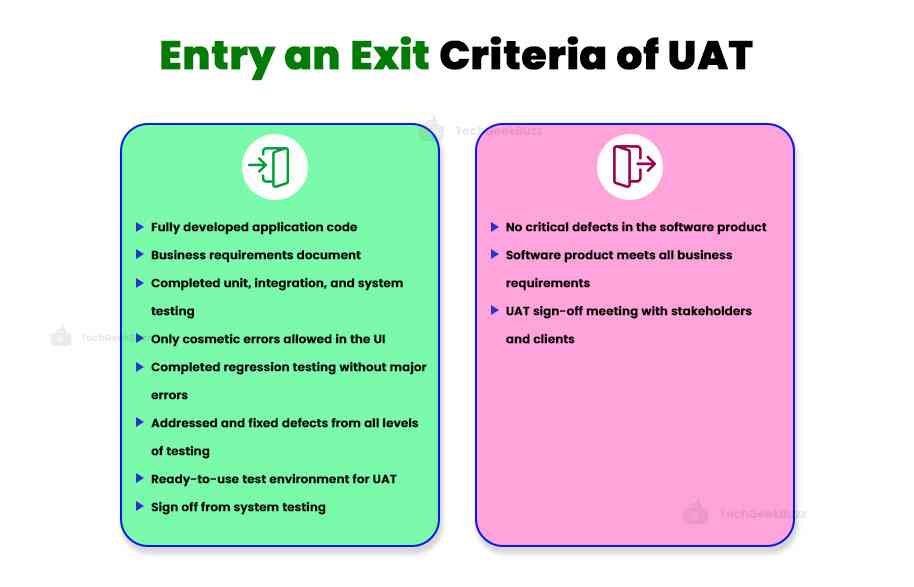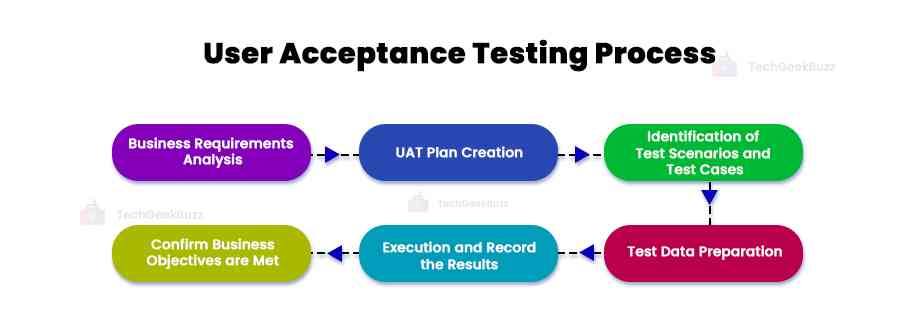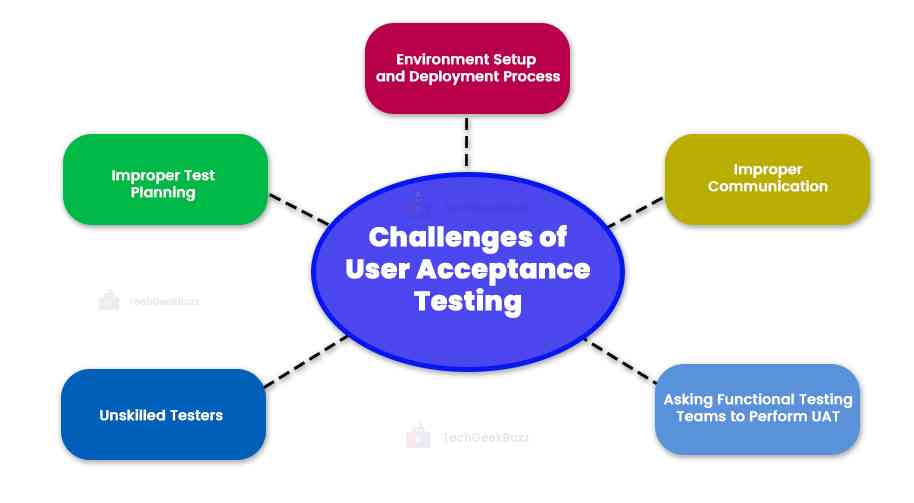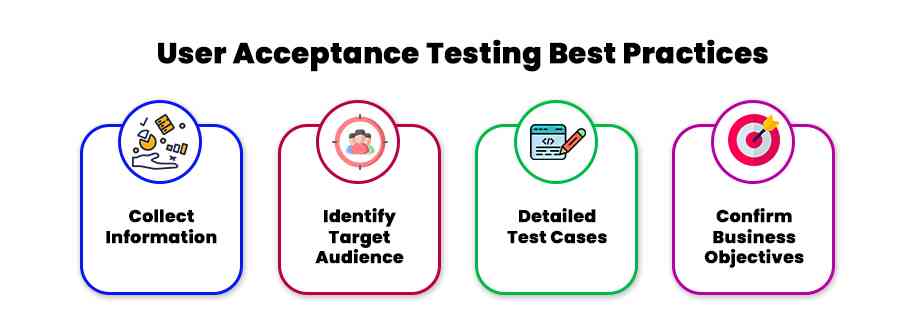The foremost goal of every software development company is to deliver the right product that satisfies customers’ needs. To ensure this, they adopt software testing that checks software products for their correctness and quality and verifies that they are in accordance with customers’ expectations.
Generally, software testers are professionals within an organization who test software products. But, there is a kind of software testing that requires real users to test software products, and this kind of testing is user acceptance testing (UAT).
The context of UAT is in its name itself. Acceptance refers to agreement or approval, while users imply customers or clients. So, UAT is basically the approval of software products by end users. Once real users approve a software product, organizations can release it to the market.
Let us dive deeper into user acceptance testing and its various aspects in this blog post.
What is User Acceptance Testing (UAT)?
As its name implies, user-acceptance testing (UAT) is a kind of software testing that end users carry out on software products. It is also referred to as end-user testing or beta testing , where end users determine whether the software product is ready to go live or not or whether it is accepted or not in the real world.
UAT, which is the last step of the software development process , comes after the completion of unit testing , integration testing , and system testing. Here, end users assess software products against business requirements. They test the software product to verify the end-to-end business flow.
The primary purpose of UAT is to make sure that the software product is able to perform functions after releasing it to the world as it was intended to. Before finally moving the software product to the production environment, end users get a chance to use it and check whether it contains any bugs or errors and whether all the functions work correctly.
Furthermore, if end users detect any errors or find out any overlooked feature, they create a report that is forwarded to software developers for making changes before the final release.
What is the Purpose of User Acceptance Testing (UAT)?
UAT is the last step in the software development process which implies that the software product has undergone unit, integration, and system testing. This further indicates that the software product is completely functional. Though the software product tends to be completely functional, it might not meet some of the specified business requirements, which are very well-known to end-users.
This happens if:
- The development team does not have clearly defined requirements from its intended users.
- The software product may undergo modifications during development which can change the scope of the project.
- Software is not ready to test in dynamic or real-world environments.
To avoid the release of faulty software products to the world, UAT comes into the picture. UAT is a thorough testing process emphasizing end-user requirements and identifying potential defects that were left uncovered in the previous levels of software testing .
Without performing UAT, you risk releasing software with faults and problems that fall short of end users' expectations. This ultimately costs you a lot of money to correct the flaws, and you risk harming your reputation in the process. So, UAT is an inevitable part of the software development process.
Who Performs UAT?
The actors who will perform UAT are generally the users who are going to actually use the product after its release or the clients who are going to buy the product. Both these actors know how the product should function and how it will be used on a day-to-day basis.
Furthermore, UAT also involves internal functional experts to help end users or clients outline the UAT cycles, manage the entire testing process, and interpret the results.
Entry and Exit Criteria of UAT
For every type of software testing, there are entry and exit criteria. Entry criteria are conditions or documents required to start a particular testing phase. Meanwhile, exit criteria refer to tasks, documents, items, or actions that have to be performed before ending the current phase and moving to the next phase.

Entry Criteria for UAT
- Fully developed application code.
- Business requirements document.
- Completion of unit, integration, and system testing.
- No high- or medium-level errors; only cosmetic errors (errors in the UI part of an application that are mostly visible) are allowed.
- Completion of regression testing without any major errors.
- Defects reported in all levels of software testing should be addressed and fixed before UAT.
- Ready-to-use test environment for UAT.
- Sign off from system testing.
Exit Criteria for UAT
- No critical defects in the software product.
- The software product meets all the business requirements.
- UAT sign-off meeting with all the stakeholders and clients.
User Acceptance Testing Process
Before the UAT process, let us first shed light on the objectives of UAT.

UAT Objectives
The primary goals of UAT are:
- Make sure that the software product performs business features as expected and in accordance with business requirements.
- Confirm that the software product is in its usable form from the end users’ point of view.
- Verify that the software product satisfies all the legal requirements.
- Ensure that the software product is ready to go into production.
Performed by users under the supervision of internal functional experts, user acceptance testing involves the following steps:
-
Business Requirements Analysis
As UAT involves testing the software product against business requirements, it is obvious that a group of users who are testing should understand and analyze business requirements.
Furthermore, UAT also requires identifying and creating test scenarios. As a result, you will need the business requirements document (BRD). Along with it, you need the following documents for creating test scenarios:
- System Requirements Specification (SRS)
- Business use cases
- Project charter
- Process flow diagrams
-
UAT Plan Creation
After analysis, there comes the UAT plan creation, which involves a structured strategy to assess the software product to verify that it complies with the business requirements. The UAT plan creation entails entry and criteria for UAT, the creation of test scenarios and test cases, and the testing timeline.
-
Identification of Test Scenarios and Test Cases
Leverage the aforementioned document list to identify and create test scenarios . Based on the test scenarios, create test cases such that they should cover most of the UAT test scenarios. For creating test cases, you need to use business use cases as the input.
-
Test Data Preparation
Now, there comes the data preparation step. Test data is simply the input you need to provide to the software product under testing to check whether it processes the data properly and outputs correctly as expected. This step entails collecting from existing databases or generating and manipulating new data for the test. However, it is ideal to use live data for UAT.
-
Execution and Record the Results
Run the created test cases and observe the results. Consider a specific test case, run it for the result, and examine the result. If the result is as expected, the test case passes; otherwise, it fails. Look for failed test cases and identify bugs or errors. Further, report all the bugs and errors to the development team for fixing. After fixing, retest the software product. Continue this process until the software product is free from defects.
-
Confirm Business Objectives are Met
After testing the software product against business requirements, the last step is to confirm that the product meets the business requirements. Further, users performing testing need to sign off from UAT and confirm that the product is ready to go for production.
Challenges of UAT
The following are some significant challenges organizations encounter while performing UAT:

-
Environment Setup and Deployment Process
UAT requires a testing environment other than the one where the organizations carry out functional testing on software products. Using the same test environment for UAT will result in overlooking real-world use cases. In addition, performance testing would not work well with the same testing environment. So, UAT requires a production-like environment.
Furthermore, you need to take care of release cycles once you set up a production-like environment for UAT. The reason is that uncontrolled release cycles could lead to different software versions on the functional test environment and UAT’s test environment.
-
Improper Test Planning
The most challenging task in UAT is to identify real-world test cases for execution. In addition, UAT has to be carried out by prioritizing the most critical business requirements.
Further, as UAT is the final stage of the software development life cycle (SDLC), more time in carrying out previous stages of SDLC results in less time for UAT. With UAT being the most critical phase for a software release, it has to be carried out properly, which may be time-consuming.
So, improper test planning is yet another biggest challenge for UAT. Sometimes, there may be overlapping between system testing and UAT. As a result, the software product, without undergoing complete functional testing, may undergo UAT. In such a circumstance, the objectives of testing may not be fulfilled.
-
Unskilled Testers
As UAT involves end-users or clients, it is the responsibility of an organization to train them regarding the testing process. If not, they may not know how to perform testing or how to report bugs. In short, unskilled testers will not be able to carry out effective UAT.
Additionally, non-technical UAT testers may find technical difficulties in executing test cases. So, it is always better to invest time in training UAT testers.
-
Improper Communication
There are chances for gaps in communication between the UAT testing and functional testing teams. This communication gap between testers could lead to major issues or delays in reporting errors or defects found during UAT to the development team. So, proper and concise communication is essential between teams.
-
Asking Functional Testing Teams to Perform UAT
Asking functional teams to perform UAT is one of the worst cases because this type of testing is intended to be performed by end users. If functional testers carry out UAT, the whole testing process will get compromised. Further, the customers will be able to easily spot issues in the software product once it gets live.
UAT Best Practices
The following are some of the best practices for UAT that you can follow:

- Collect Information: You must collect the accurate data required for various testing activities, including the test data, the actions you need to perform, and the product you are going to test.
- Identify Target Audience: While you perform UAT, you must understand the product’s target audience. Doing this will help you know what to look for and provide the appropriate feedback.
- Detailed Test Cases: The design of test cases should so detailed that it should be understandable to different types of users involved in UAT.
- Confirm Business Objectives: Once you finish UAT testing and all the bugs are resolved, make sure to sign off to indicate that all the changes made to the software product comply with the business requirements.
Conclusion
Here we reach the conclusion of our discussion on user acceptance testing.It is a sort of testing that entails end users verifying the software product. They evaluate the software to see if it satisfies the business needs or not. In other words, they check the software product's entire business flow. UAT is the best approach to make sure that the software product developed is acceptable and fit for the intended purpose.
We hope that this post has helped you better understand UAT and its process.
People are also reading:
![What is User Acceptance Testing (UAT) [Definition & Process]](/media/new_post_images/User_Acceptance_Testing.webp)


![What is Waterfall Model? [Phases, Pros, & Cons]](/media/new_post_images/Waterfall_Model.webp)

Leave a Comment on this Post